Your Eyes Are a Window: 10 Warning Signs of Nutrient Deficiencies You Can't See on a Blood Test
Have you ever noticed a subtle change in your eyes and wondered what it might mean for your health? Our eyes don’t just see the world—they reflect silent, sometimes overlooked messages from within. Routine blood tests can miss early-warning signals, especially as our bodies change and nutrient absorption shifts with age. But the mirror can become our best health ally if we know what to observe. Unlike high-tech scans or medical jargon, many signs of nutrient deficiencies appear quietly in the eyes, before they ever show up on a lab report. A tweak in vision, a little more dryness, or a new sensitivity to light might be hinting at an underlying need for specific vitamins or minerals. Instead of focusing on what’s “wrong,” let’s explore these gentle cues with curiosity and self-compassion. Early awareness means we have more choices and better odds of keeping our eyes—and bodies—feeling vibrant and strong, no matter our age. In the spirit of empowering self-care, here are 10 subtle but meaningful eye-based warning signs that can help you spot nutrient deficiencies you might never see on a blood test. Notice any that feel familiar? It may be time to give your kitchen or routine a gentle boost, always with the support and encouragement every health journey deserves.
1. Night Blindness: Vitamin A Deficiency
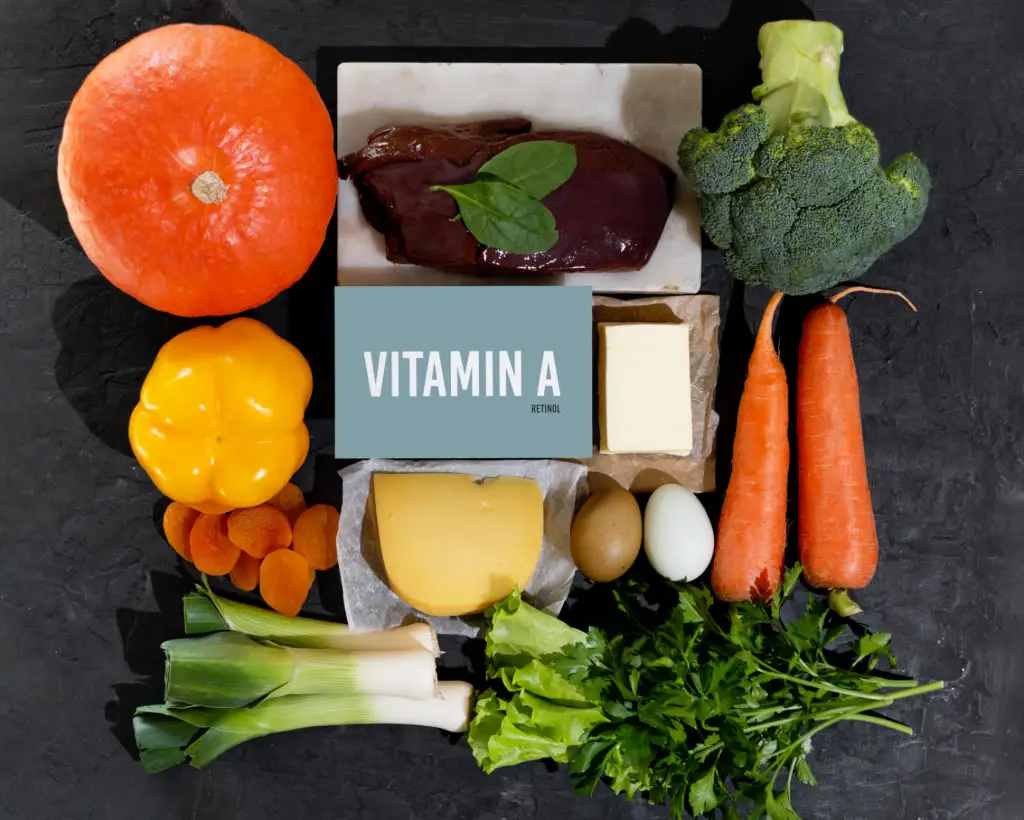
Struggling to see clearly in low lighting or darkness isn’t just frustrating—it’s one of the earliest, most telling signs of a vitamin A deficiency. Night blindness can creep in quietly, making it hard to drive at dusk or see street signs as daylight fades. While you may look healthy on paper, your eyes might be giving you a head start on what’s happening beneath the surface. Vitamin A plays a core role in converting light into signals your brain understands, fueling the very process of seeing in dim environments. The connection often gets missed on blood tests because the body’s vitamin A reserves drop gradually. Subtle changes can appear in our eyes long before lab numbers raise a flag. If your world feels dimmer at night, small dietary shifts—like adding carrots, sweet potatoes, or leafy greens—can nourish your vision from within. For older adults, absorption changes make it even smarter to check in on night vision. Recognizing this gentle cue lets you adjust before bigger concerns appear, showing that the quietest symptoms can be our greatest allies in proactive aging.
2. Dry, Irritated Eyes: Omega-3 and Vitamin A Deficiency

Do your eyes often feel gritty, scratchy, or burn after hours behind a screen? Sometimes this discomfort isn’t just about screen time or pollen levels. Dry, irritated eyes can signal a shortage of essential nutrients like omega-3 fatty acids or vitamin A—both crucial for tear production and a healthy eye surface. When these nutrients lag, eyes lose their natural lubrication, creating a sandy sensation that eye drops can only temporarily relieve. Omega-3s, found in fatty fish, walnuts, and flaxseeds, help maintain tear quality. Vitamin A supports the mucous layers that keep eyes feeling smooth and comfortable. If hydration alone doesn’t soothe your eyes, consider adding more omega-rich foods and colorful veggies into your meals. Busy lives mean self-care is practical, not perfect. Even small dietary tweaks have lasting benefits for overall eye comfort and clarity at any age. So if you reach for eye drops often, give your nutrition a gentle check as well.
3. Red or Inflamed Eyes: Vitamin B2 (Riboflavin) and B6 Deficiency
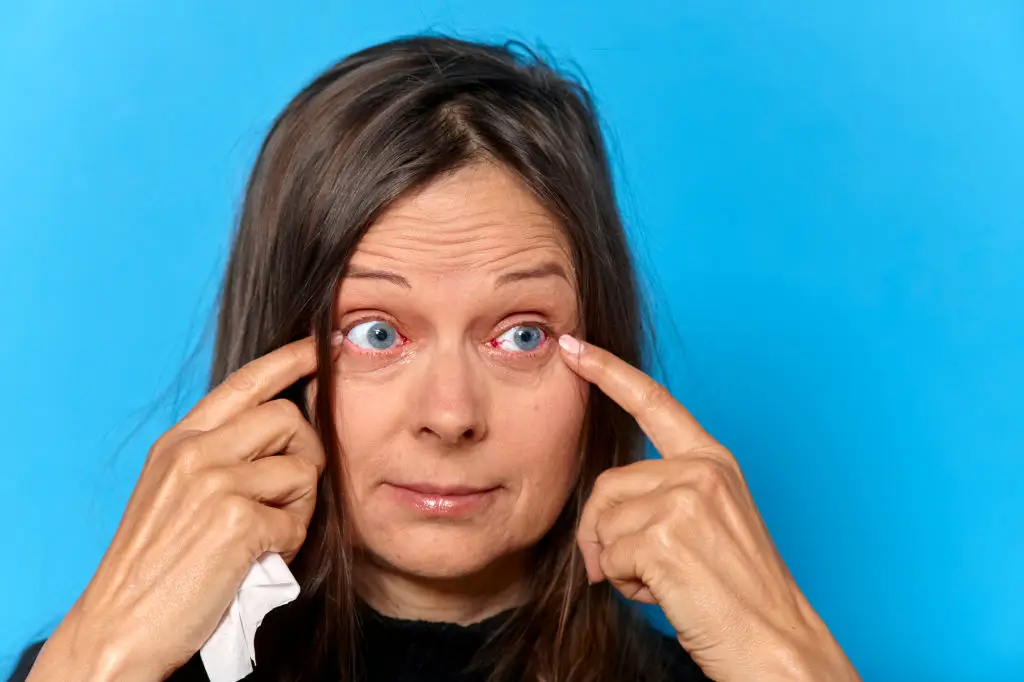
Eyes that look persistently red or inflamed—beyond what’s expected from allergies or tiredness—could be quietly asking for more B vitamins. Both riboflavin (B2) and pyridoxine (B6) play a role in calming the sensitive surfaces of the eyes. When these nutrients run low, blood vessels may stand out more or the eyes may look irritated, signaling the need for a nutrition reset. These symptoms don’t shout for attention, and they often come and go. But if glassy, reddened eyes have become your new normal, it may be time to bring whole grains, almonds, eggs, and leafy greens into focus. These everyday foods help maintain tissue health, improve repair processes, and support our eyes against the minor irritants of daily life. There’s no judgment here—redness happens to everyone at times—but a mindful, vitamin-rich meal could help bring a lasting sense of comfort back to your gaze.
4. Pale Conjunctiva: Iron Deficiency
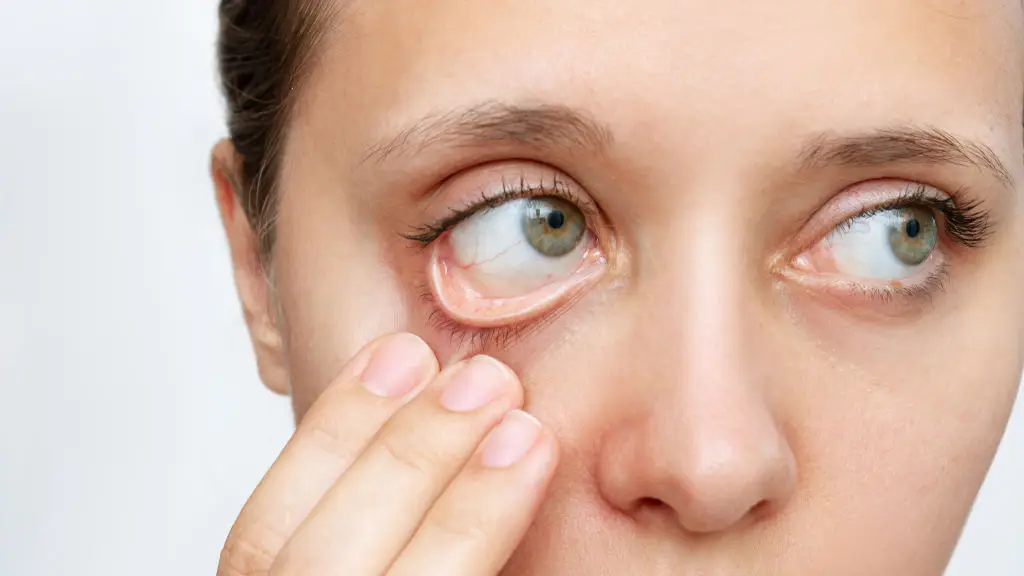
When is the last time you gently pulled down your lower eyelid and looked in the mirror? The tissue inside, called the conjunctiva, should appear a healthy pink. If it looks paler than normal, your body might not be carrying as much iron as it needs. This classic anemia signal can develop quietly, especially in women and older adults, often flying under the radar of routine tests. Iron is essential for red blood cell production and, by extension, robust circulation and a lively appearance in the eyes. If you’ve noticed other fatigue symptoms along with pale inner eyelids, it might be time for an iron check-in with your nutrition. Fortified cereals, beans, lean meats, and spinach can help nourish your levels over time. It’s not something to panic over but is a subtle, helpful reminder that your body is always sending signals worth noticing and honoring.
5. Swollen Eyelids: B-Complex and Protein Deficiency
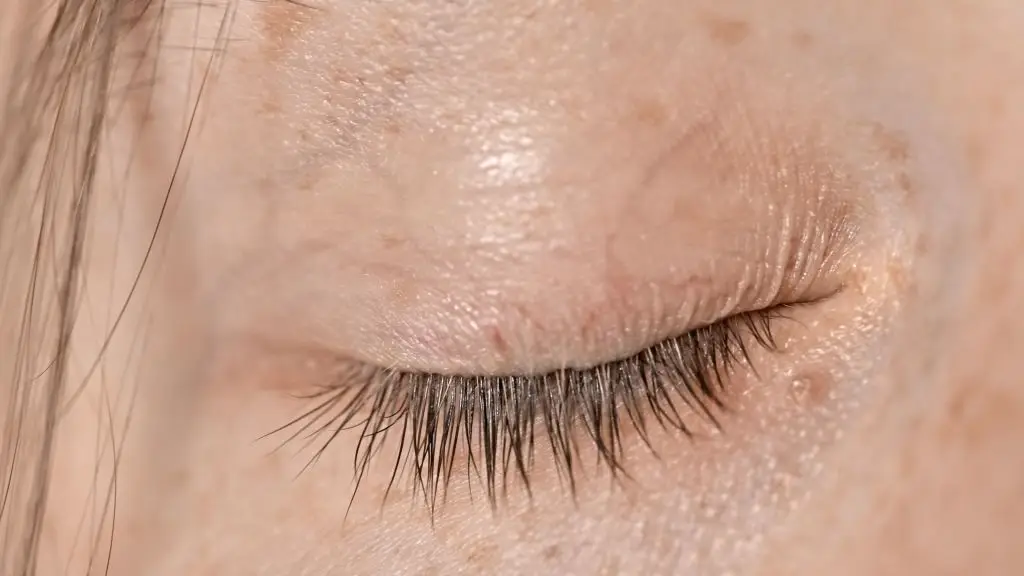
Waking up to unexpectedly puffy or swollen eyelids—not related to allergies or a good cry—can sometimes be your body’s way of flagging a shortfall in B vitamins or protein. These nutrients help control fluid balance and foster strong, healthy tissues. If your diet has been light on lean meats, eggs, beans, or dairy for a while—or if stress has changed your eating habits—your eyelids might be first in line to show it. This isn’t about blaming yourself for food choices, but rather about learning how your body communicates its needs. Gradual changes, like a swollen feeling that persists or doesn’t track with seasonal shifts, often respond well to gentle nutrition upgrades. Try adding whole foods like yogurt, legumes, and leafy greens into regular meals. Even small improvements can minimize morning puffiness and nurture overall wellness, showing that your self-care journey is both personal and powerful.
6. Blurred or Altered Vision: Vitamin E and Zinc Deficiency

If you notice your vision becoming blurry, or your ability to focus shifts for no obvious reason (beyond needing new glasses), you might be experiencing a lack of vitamin E or zinc. Both these nutrients play a quiet but vital role in guarding eye cells from daily stress and oxidative damage. When depleted—often without much notice from standard bloodwork—small changes in visual sharpness or clarity can be the first clues. Vitamin E is found in nuts, seeds, and plant oils, while zinc comes from shellfish, whole grains, and dairy. They work as a team, shielding your eyes’ sensitive tissues so that everyday frustrations like glare or fatigue are kept at bay. If you’ve recently noticed greater dependence on bright light or extra effort to read, a little dietary variety may return that ease of focus you remember. Gradual, supportive nutrition will carry the most benefits, offering real change without pressure.
7. Difficulty Distinguishing Colors: Vitamin B12 and Thiamine Deficiency

Has a loved one ever pointed out that blue and green seem to blend together for you? Subtle changes in the ability to tell colors apart—especially in low light—can, in some cases, hint at low levels of vitamin B12 or thiamine. These vitamins are central to healthy nerve function, a necessity for the “wiring” that brings clear, accurate color perception to the brain. Color confusion isn’t especially common, but as we age or shift to more plant-based eating styles (vegan, vegetarian), B12 and thiamine can drop. Fortified cereals, dairy, and nutritional yeast become gentle allies for keeping color vision vibrant. If you or someone you care about notices new struggles with color sorting, think of it as your eyes asking for a little extra support, not as a cause for alarm. A bit of attention goes a long way.
8. Light Sensitivity: Magnesium and Vitamin B2 Deficiency

Does bright sunlight or office lighting bother your eyes more than it used to? Heightened sensitivity to light, known as photophobia, can have simple causes like screen exposure but may also reflect a shortfall in magnesium or riboflavin (B2). These nutrients are champions for nerve health and energy production, calming the ways our eyes react to intense light conditions. Migraines, fatigue, and certain medications can also increase light sensitivity, but nutrition is a factor worth exploring. Chia seeds, almonds, dark leafy vegetables, and whole grains deliver magnesium and B2 to busy bodies and tired eyes. No need to eliminate all brightness—just give your routine a small boost and watch for improvements. This gentle approach fits busy lifestyles, fostering both comfort and resilience in your daily view of the world.
9. Slow Pupil Response: Thiamine and Niacin Deficiency

Observant folks may notice their pupils taking longer to adjust from dark to light—or vice versa—over time. While aging brings gradual changes, a sluggish pupil response could point to gaps in thiamine (B1) or niacin (B3) intake. These B vitamins power up our nervous system, making sure the reflexes governing the iris stay snappy and responsive. This sign is subtle and rarely urgent but can be a gentle wakeup call about your diet—especially for older adults. Poultry, whole grains, and seeds are everyday ingredients that pack a punch for eye and nerve health. Slow changes over many weeks matter; give yourself room for progress, not perfection. Taking notice and embracing small changes is what sustainable wellness is all about.
10. Twitching Eyelids: Potassium, Calcium, and Magnesium Deficiency
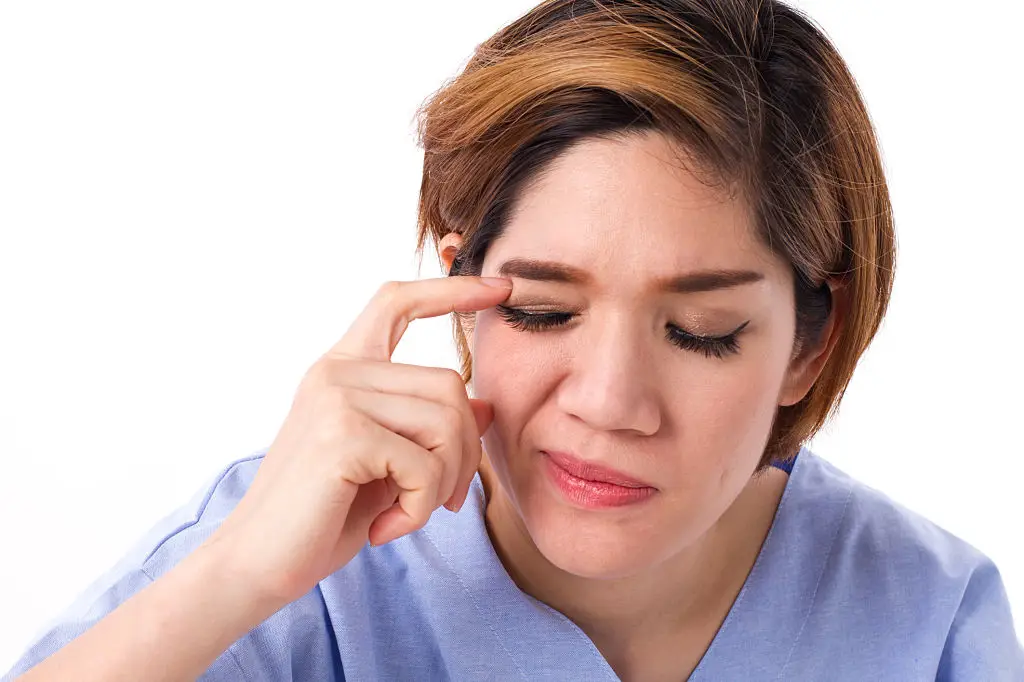
A fluttering eyelid now and then can be a harmless quirk, but when it pops up more often—without caffeine or obvious stress triggers—it might signal a need for potassium, calcium, or magnesium. These minerals work together to power smooth muscle movements, including the rapid tiny muscles around the eyes. Occasional twitches are very common and usually nothing to worry about. However, if you’ve noticed this happening alongside other signs—muscle cramps, fatigue, or restless sleep—it’s worth considering small dietary shifts. Bananas, leafy greens, seeds, and yogurt are mineral-rich options that work for all lifestyles. Think of these twitches as gentle nudges, not warnings. Nourishing your body and resting well will help them fade, reminding you that your body’s “alerts” can be both manageable and meaningful.
A Clearer View for Healthy Aging

Our eyes reflect not just the world around us, but the subtle stirrings of deeper wellness within. The signals they send are more than just physical quirks—they’re gentle reminders from our bodies to pause, reflect, and support ourselves with patience and care. While standard lab work is important, it’s the wisdom of everyday observation that truly empowers us to address nutrient gaps before they become larger concerns. None of these signs mean something is broken or unfixable. Most are simple, reversible, and serve as invitations rather than alarms. They encourage us to explore a wider variety of foods, to gently tweak routines, and to notice what changes when we meet our bodies’ needs with respect. With small adjustments and ongoing curiosity, every one of us can nurture both eye health and overall well-being—because feeling vibrant, at any age, is always within reach. Embracing these gentle cues from your eyes isn’t about worry—it’s about honoring the partnership between body and self. As you notice, respond, and care, you write a story of attentive, empowered aging—where clarity of vision is matched by confidence from within.
